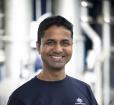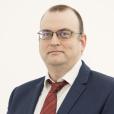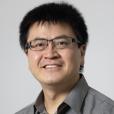Radionuclides have been used routinely in medicine for more than 60 years. Nuclear medicine uses radiation to provide information about the functioning of a person's specific organs to diagnose or treat disease. The radionuclides used in medicine have half-lives ranging from a few minutes to several days in order to minimise the radiation dose the patient receives. For three unknown medical radionuclides, students will graph their decay over time, use the graph to calculate their half-life, and determine the identify and use of each radionuclide using background information provided.
Come and discover the world of nuclear science at ANSTO - book a school tour in Sydney today.

Materials Engineer
The workshop will offer a comprehensive introduction to the latest scientific analytical tools which are exclusively offered across the facilities under the operation of ANSTO, including neutron, synchrotron and accelerator based techniques.
Sydney

Manager, Accelerator Physics
Role at ANSTO

Commercial Technical Consultant, NST Strategic Research Services and Engagement
Role at ANSTO
The new facility will be built around a product line of ANSTO’s design – a new Technetium-99m generator – that will enable greater process automation than is possible with existing technology, leading to improvements in efficiency, quality and importantly the highest levels of production safety.
ANSTO’s nuclear medicine processing and distribution facility assembles, loads, tests and distributes a range of nuclear medicine products, including Mo-99. The Mo-99 is dispensed into an ANSTO radiopharmaceutical Gentech® Generator where it decays to Tc-99m.
In accordance with the Trust Deed, the United Uranium Scholarship is awarded to ‘promising young scientists’ from any Australian organisation or institution whose research or work is in the field of nuclear energy.
Atomic structure of new cathode material for sodium ion batteries helps explain long life
Most fingermark research has largely focussed on the organic material in residues. Consequently, a gap in fundamental knowledge exists when it comes to inorganic components such as metals.
(ANSTO) has welcomed the launch of the new National Science Statement and revitalised National Science and Research Priorities by Minister for Industry and Science, The Hon Ed Husic MP and Australia’s Chief Scientist, Dr Cathy Foley AO PSM.
Dr Rezwanul Haque, now a senior lecturer at the University of the Sunshine Coast, received a national Young Scientist Award for his earlier research using nuclear techniques at ANSTO’s Australian Centre for Neutron Scattering to find cracks and signs of stress in riveted joints in sheet metal in car bodies.

Senior Accelerator Physicist
Role at ANSTO
Nitrogen-doped ultrananocrystalline diamond (N-UNCD) is a promising material for future biological and electrochemical applications.
There has been an increasing pressure on construction industrial sector to utilise innovative materials that not only meet the requirements of ambitious architectural designs, but also reduce CO2 emissions.
Pagination









